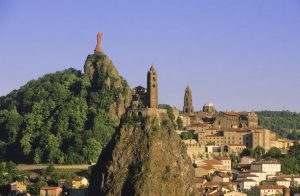
The Regordane is a way but also a link between many monuments classified with The Patrimoine Mondial de l’UNESCO. You will discover Le Puy en Velay cathedral, villages among « the most beautiful in France », the Arenas of Nîmes, Saint Gilles Abbey and The Cévennes country side.
The Regordane Way is itself an inspiration today for those who want to undertake new projects full of inspiration and enthusiasm.
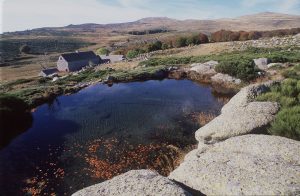 Between The Massif Central and The Mediterranean, from Le Puy en Velay to Saint Gilles in Petite Camargue The Regordane (240 km) crosses two regions : Region « Rhône-Alpes-Auvergne » and Region « Occitane-Pyrenees-Mediterranée » (three departments altogether Haute Loire, Lozère and Gard).
Between The Massif Central and The Mediterranean, from Le Puy en Velay to Saint Gilles in Petite Camargue The Regordane (240 km) crosses two regions : Region « Rhône-Alpes-Auvergne » and Region « Occitane-Pyrenees-Mediterranée » (three departments altogether Haute Loire, Lozère and Gard).
Whether in the Volcanic District or in the Cévennes or by the Mediterranean coast, for 5, 6 or 10 days, it offers walkers a rich cultural visit among nature.
To prepare a visit, you can combine walking with transfers by road or by rail to make it easier.
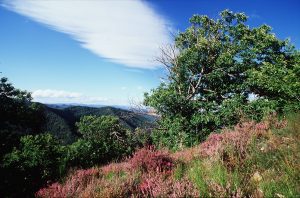 The Regordane Way, confirmed GR700, has been a route of pilgrimage and commerce, more than a thousand years old, inviting you to discover the men and the landscapes they have moulded over the centuries through Le Pays Vellave, Le Gevaudan, Le Mont Lozere, Les Cevennes, les Garrigues and les Costières Nîmoises et La Camargue.
The Regordane Way, confirmed GR700, has been a route of pilgrimage and commerce, more than a thousand years old, inviting you to discover the men and the landscapes they have moulded over the centuries through Le Pays Vellave, Le Gevaudan, Le Mont Lozere, Les Cevennes, les Garrigues and les Costières Nîmoises et La Camargue.
Its name La Regordane whose origins remain mysterious, has been associated thanks to its cultural diversity and history to the name Chemin de Tolérance, since 1995, a concept sponsored by UNESCO.
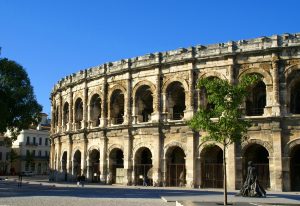
The « Regourdans » or merchants and mule drivers travelled along this way transporting cloth, wine, salt and other goods from The Languedoc to Le Puy a route of transhumance and dolmens with inscriptions and messages, some undecipherable to this day.
A sacred route for pilgrims on their way to the tomb of Saint Gilles or to the Black Virgin of Le Puy. The Regordane, connected to the way of St James through Via Podemia (GR65 at le Puy) and Via Tolosana (GR653 in Saint Gilles) is therefore marked out by a chain of hospitals and leper houses as in Pradelles which is one of the last four, remaining in Europe.
Many also used this way for the first crusades : pope Urbain V, Adhemar de Monteils, archibishop of Le Puy en Velay and papal légat of Raymond de Saint Gilles.
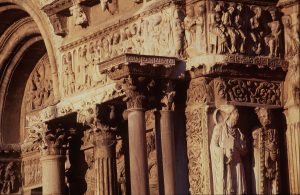 The itinerary is also at the heart of the great movements of Medieval History.
The itinerary is also at the heart of the great movements of Medieval History.
The Regordane is also an Epic Way, symbolized by « La Route des Arvernes », used by Cesar to cross the Cévennes.
It is also a scene of operation by Guillaume d’Orange who delivered Nîmes from the Saracens, a story which is related in one of the most ancient troubadours gesture : « Le Charroi de Nîmes ».
One call it too « un Chemin de contes et d’histoires » because future hikers will be walking in the footsteps of writers or composers such as Alphonse Daudet or SergueÏ Prokofiev, and discover many tales and stories.
A way also of Freedom, questioning the Roman Church: Arianism, Catharism, Protestantism and a way of Liberty and Human Rights with Rabaut Saint Etienne, parson of Nîmes and also with the Marquis de Lafayette, not to forget the fights of the « Camisards » during religious wars and of the « Resistants » during the Second World War , or of the Cévenol coal miners fighting for their social rights.
The « Chemin de Regordane » has a rich historic heritage. Through its six territories you will see the contribution of different civilizations and their cultural diversities set in various and wonderful landscapes and villages.

Do come and join the « Regourdans » … www.chemin-regordane.fr
Photos
Pays Velave : Le Puy en Velay (vue générale) – crédit photo : OT Le Puy en Velay
Mont Lozère : Lac de Villefort – crédit photo MA Lointier (assoc. Régordane)
Les Cévennes : panorama – crédit photo MA Lointier (assoc. Régordane)
Garrigues et Costières : Les arènes de Nîmes – crédit photo : Gard Tourisme
Camargue : Abbatiale, sculptures – crédit photo MA Lointier (assoc. Régordane)
